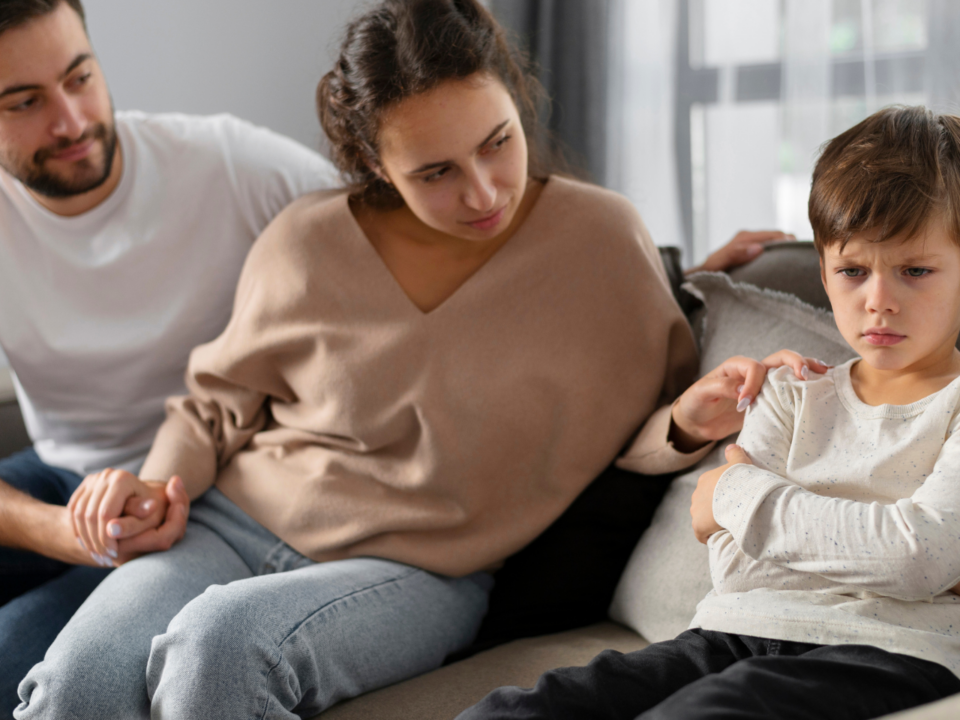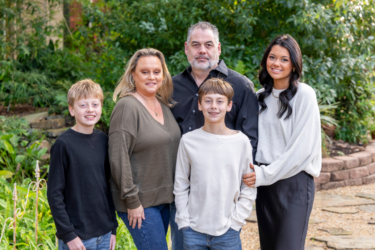The fairytale stories we read as children about a prince and a princess falling in love and having a magically happy ending is just a tale for many. In fact, almost 50 percent of marriages in the U.S. end in divorce, states Wilkinson & Finkbeiner.
It can be devastating, frustrating, and overwhelming to decide to get a divorce, especially if there are children involved. If you’ve made the difficult decision, here is how you can discuss, handle, and care for your child while going through this time.
THE DISCUSSION
After making the decision, one of the first steps is having a discussion with the children. This conversation can be heartbreaking for both the parents and the little ones. Depending on the age, maturity, and family dynamic, this will look different for everyone. If possible, it can be beneficial for children to hear the news from both parents together rather than just one.
“Children look to us for security, and a divorce inevitably shifts the family foundation a child has come to rely on,” states the Child Mind Institute. “But it is also a very important conversation because it gives parents an opportunity to try to lay the groundwork for a healthy new start for the whole family.”
Following a divorce, visitation schedules lead to reduced time with each parent, and children have two different homes. As parents, it’s crucial to acknowledge and address these shifts in order to support the well-being of the children involved.
“With a child who is young, maybe in grade school or younger, I think the best thing to always tell kids is ‘Mom and Dad both love you,’” says Ashley Opfer, A Law Partner at Opfer | Campbell | Beck P.C.
By telling and reinforcing to children that both parents love them and nothing will change that, can help them digest the news. Opfer also encourages parents to invite appropriate questions, like “Will I get to bring my dog with me to the other house?”
For middle and high school kids, it’s important to let them know what’s going on because they might make assumptions or blame themselves. Parents don’t need to go into the details of why the marriage failed but, instead, find a median so they aren’t completely out of the loop.
“I think the courts in Colorado for a while had leaned towards keeping all kids in the dark in the hopes that it would allow kids to maintain a really positive relationship with both parents because they wouldn’t be tainted against either parent,” Opfer says. “But I think the taint will come if you keep them in the dark more than it would if you’re just being honest with them.”
AVOID THE BLAME GAME
If possible, it’s important to avoid putting blame on one sole parent. Ashley Beck, another Law Partner at Opfer | Campbell | Beck P.C., points out that adults tend to want to explain why something happened, but this can have negative consequences.
Beck offers a few ways to explain to children without putting the blame on one parent:
-We don’t work together in the marriage anymore.
-We wanted to create the best situation for you.
-You may have noticed that Mom and Dad fight a lot, and we wanted to create an environment where you didn’t have to listen to that.
Another person you shouldn’t put the blame on is the judge because it can make children afraid and not trust the legal system. Opfer explains that there are people put in place to help families through a divorce, but if children fear the court system, those individuals can’t help.
Moreover, don’t discuss or explain what specifically is happening in the legal process. Saying things like “I’ve filed a motion to restrict your dad’s parenting time” is extremely harmful and confusing for children.
BEHAVIOR ISSUES
Opfer tells clients to expect behavior changes even if it’s a standard divorce because any level of change in a child’s life will produce some sort of issue. Common behavioral changes include children becoming frustrated more easily or a reversion of milestones like having trouble sleeping or having accidents.
“Those are all really normal because change produces anxiety in any human, especially in young kids who don’t really understand,” Opfer says. “They haven’t lived long enough to have the foresight to see what’s going to happen in the future and to know that this will work itself out eventually.”
Children adapt to change much better than adults, so the quicker parents can get back into the new routine, the better. Yet, if these behavioral changes occur or a child continues to struggle with emotional dysregulation after the divorce is resolved, it’s a good indicator that the child would benefit from therapy.
One behavioral problem that should raise some concern is if a child is being secretive with one parent, like saying, “Dad told me I can’t tell you.” Parents should not be pulling information from a child about the other parent, but if a child becomes secretive, it is a good idea to reach out for help.
YOUR CHILD COMES FIRST
Put your child’s needs above the feelings towards your partner. Invite questions, be patient, and make the most of this change. For little kids, explaining they get to have two Christmases and two birthdays can be exciting. Another way to make the most of the change is by letting them pick out a new bedspread, putting a picture of the other parent in their room, or allowing them to bring their favorite teddy bear, pillow, or toy over with them.
“Let your kid choose what comfort they need to have going back and forth regardless of whose house it belongs at, who paid for it, who got it in the divorce – none of that matters,” Opfer says. “If you make your children’s best interest your guiding star in any divorce or custody case, you won’t do it wrong.” ■





